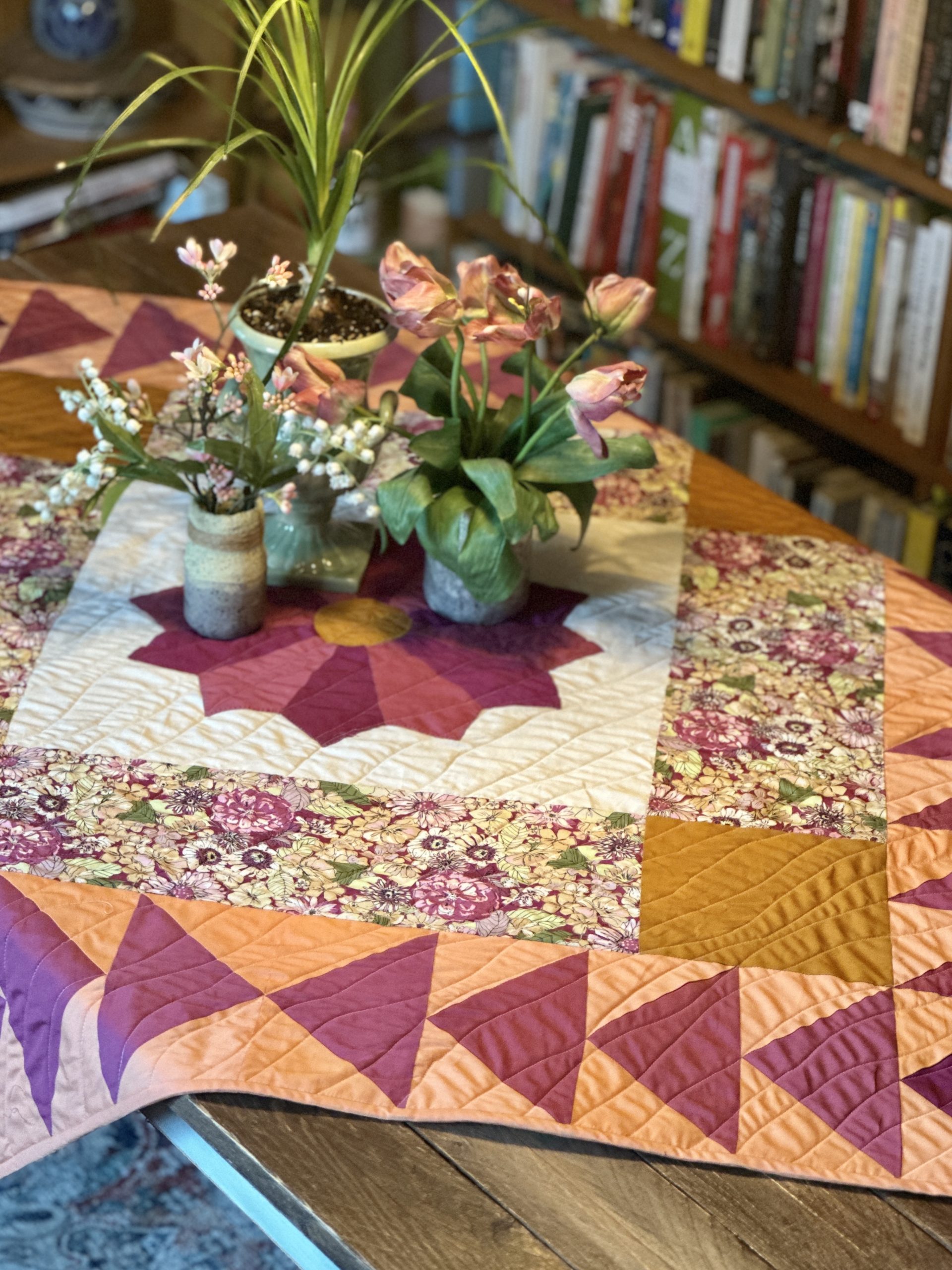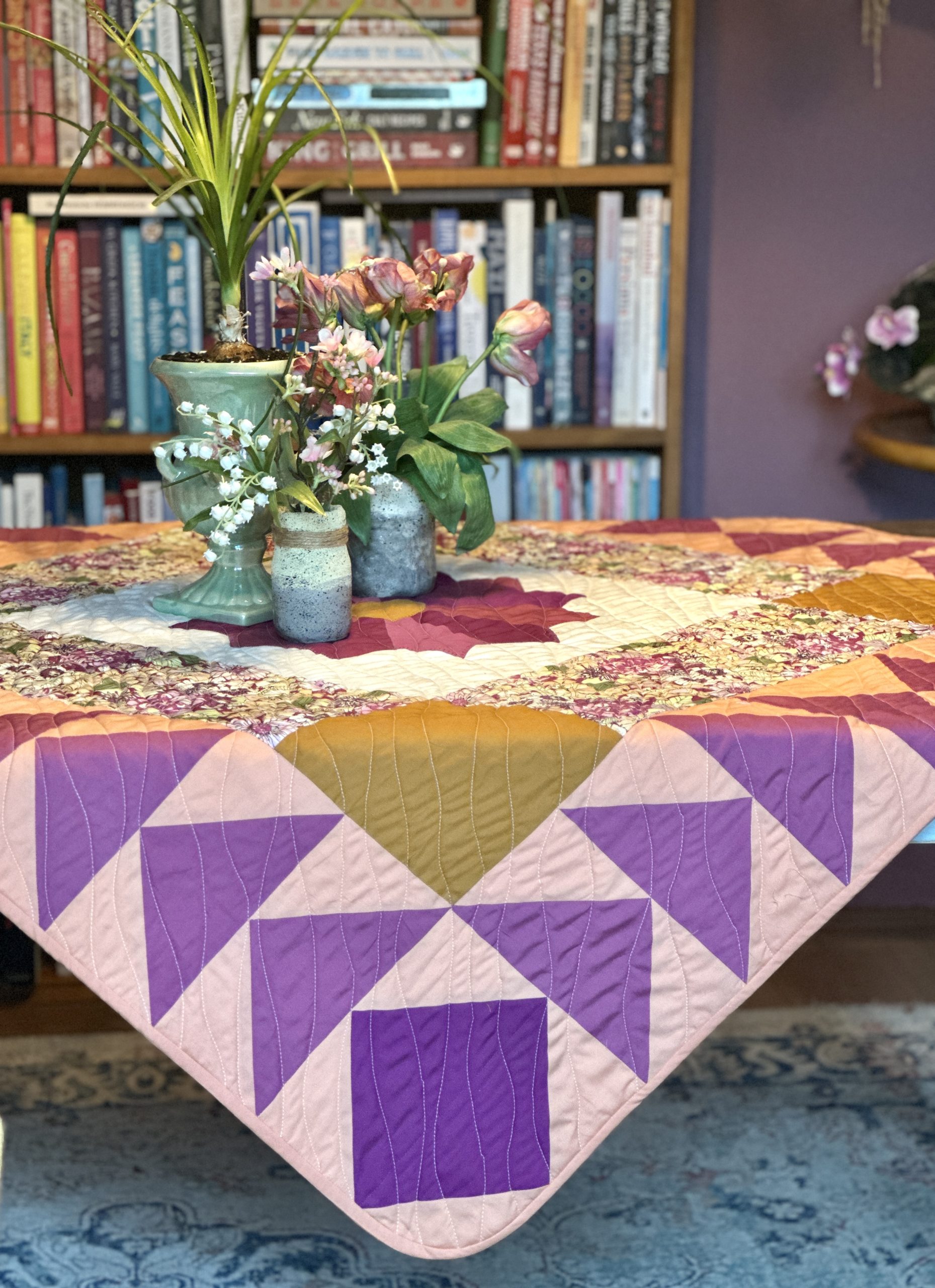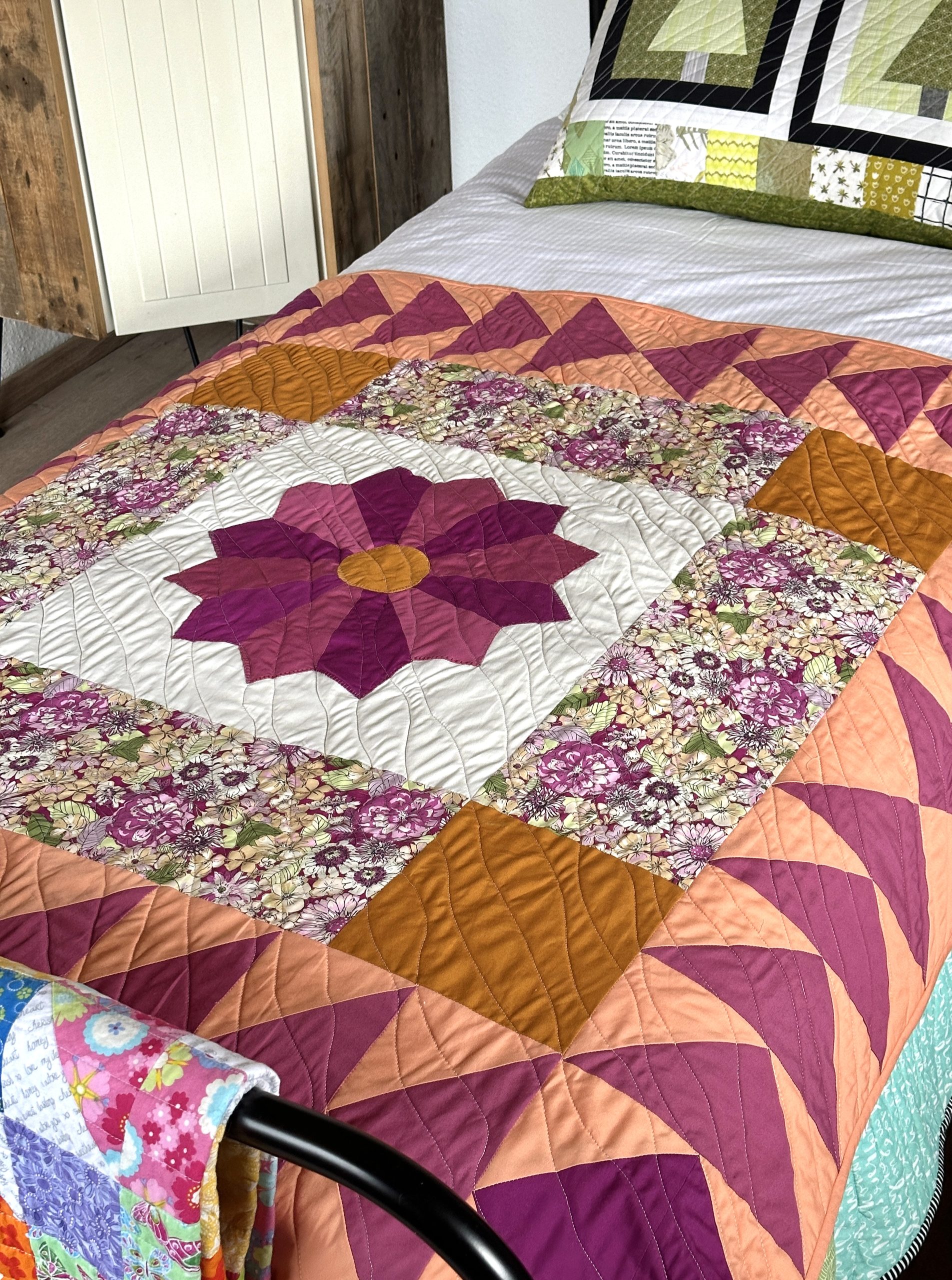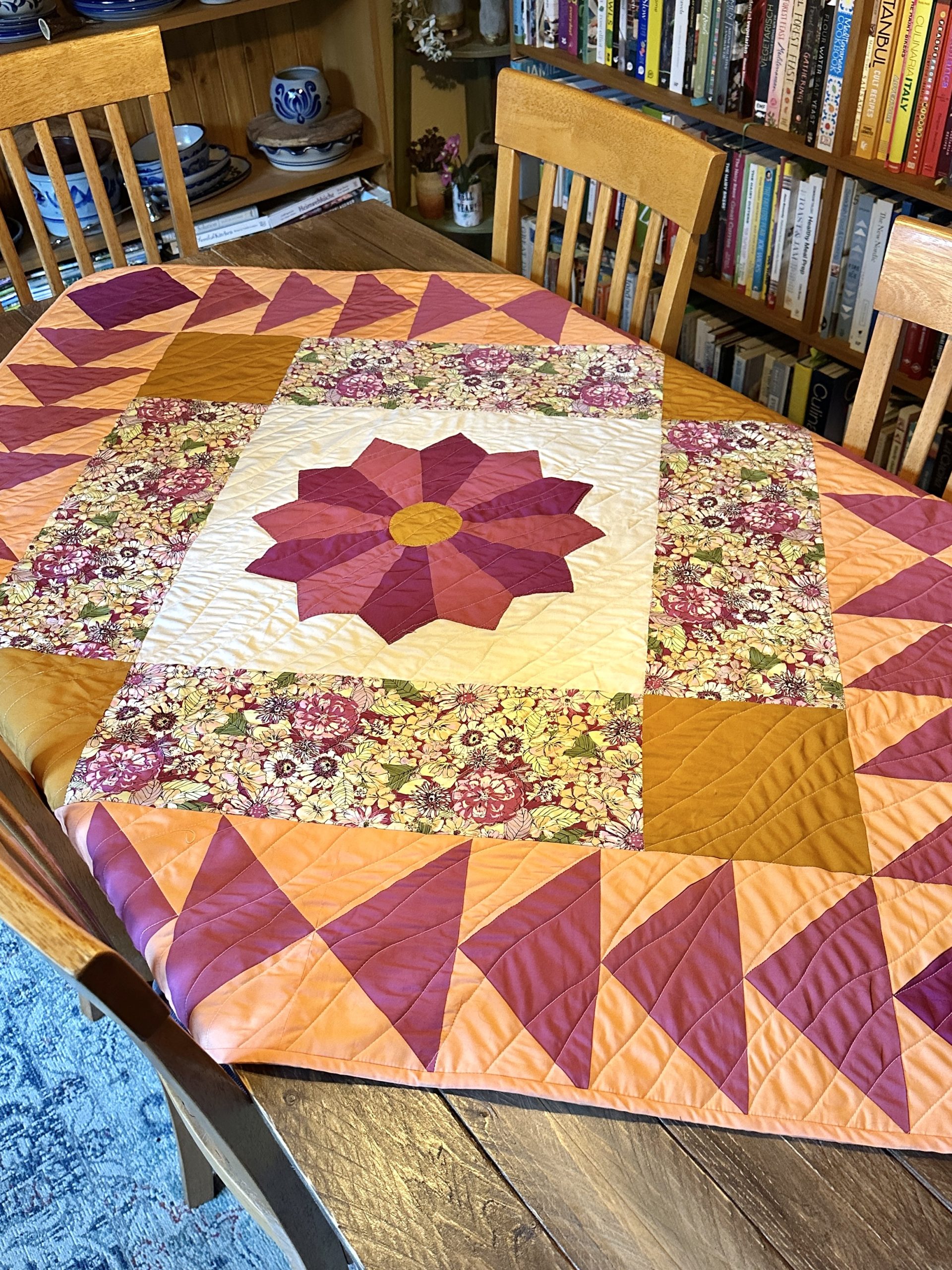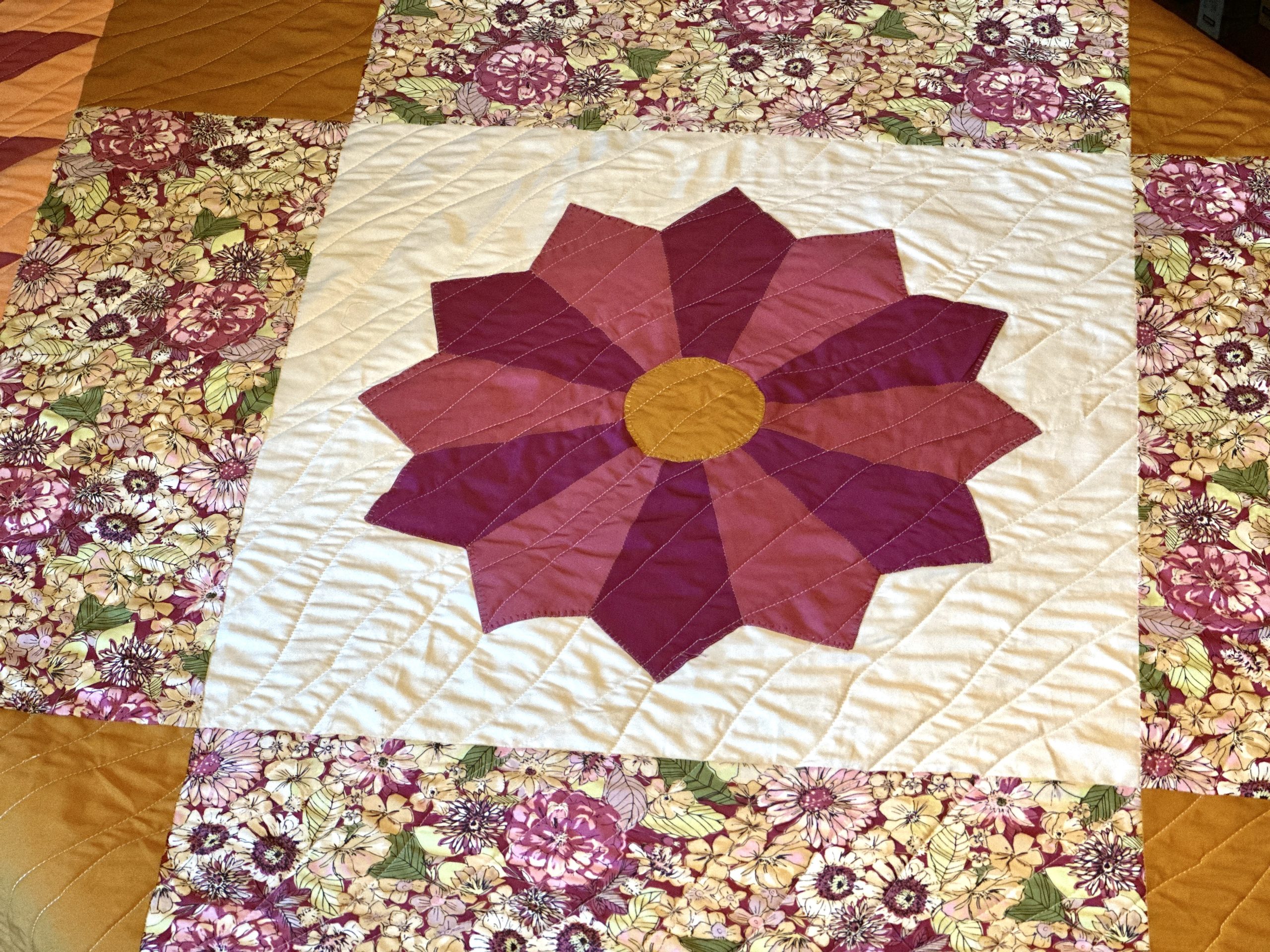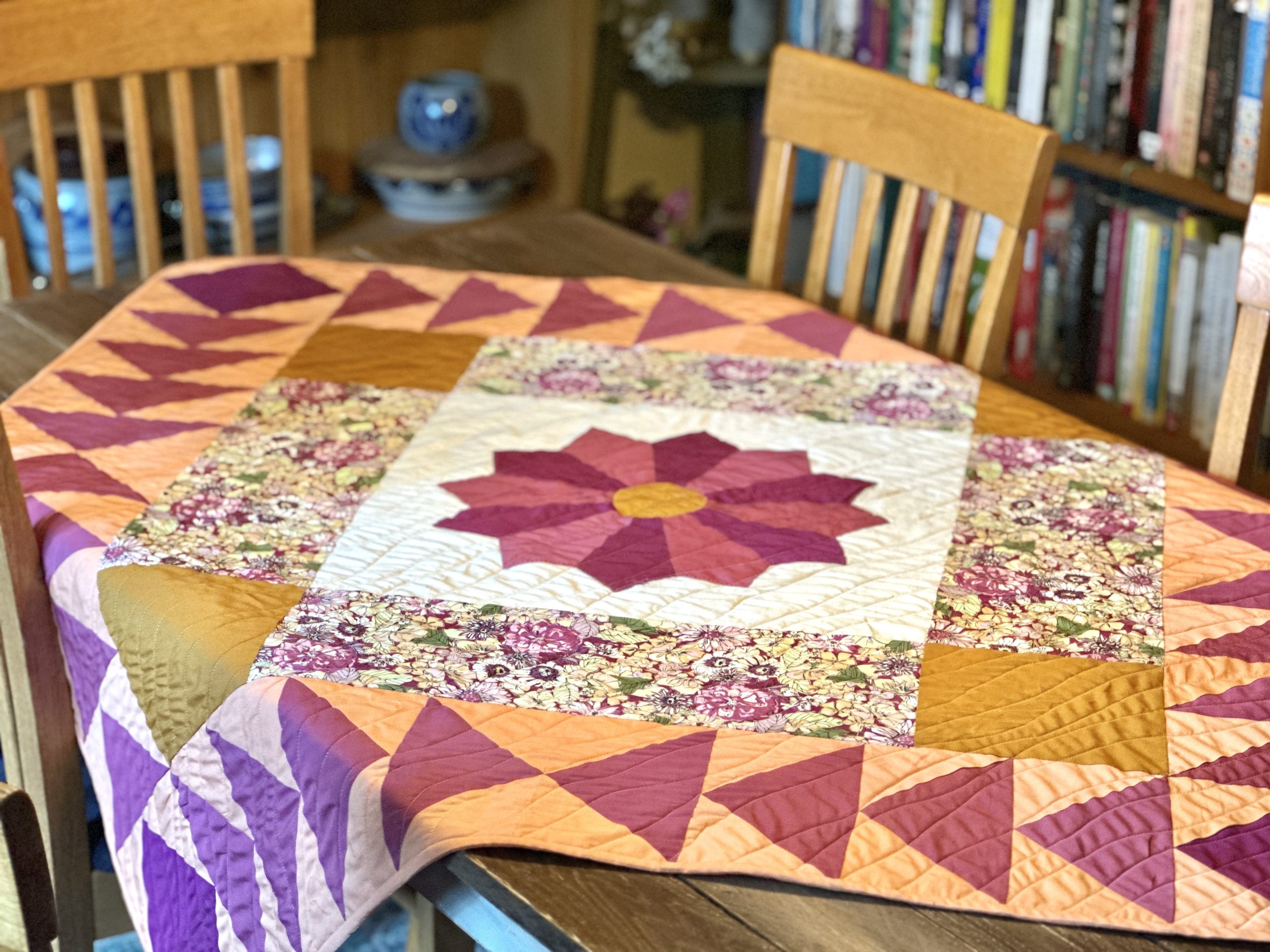
Make your kitchen table the focal point of your dining room with an eye-catching table topper from Debbie von Grabler-Crozier. Made in shades of peach and plum, this quilted table topper features a medallion design with a classic Dresden plate as its center motif. This spring quilting project is large enough to double as a bed runner, so it’s a wonderful project to brighten up any room. Plus, don’t miss Debbie’s article on the history of the Dresden Plate!
Designer Note: Seam allowances are all 1/4” and have already been added.
Materials:
- Fabric: (Note: All fabrics are by Art Gallery Fabrics.)
- Solid fabrics in the following colors and amounts from the Pure Elements collection by AGF:
- Fat Quarter Raw Gold (dark mustard yellow)
- 3/4 yd. Apricot Crepe (apricot)
- 20” strip Porcelain (off-white)
- 3/4 yd. Bougainvillea (lighter pink)
- 12” strip Purple Wine (purple)
- 3 yards floral fabric for the backing and sashes. Debbie loves Fleuron Soul from the Soul Fusion collection by AGF.
- 1/2 yard fabric for the binding. Debbie is using extra Apricot Crepe (solid) from the Pure Elements collection by AGF
- Solid fabrics in the following colors and amounts from the Pure Elements collection by AGF:
- Interfacing:
- 53” #279 80/20 cotton mix batting (Vlieseline)
- Coordinating threads for all fabrics and trims
- Scissors
- Fabric marking tools
- Extra feet for your sewing machine (walking foot, for example)
- PDF Templates – These are located at the bottom of this page. See printing instructions below.
PRINTING INSTRUCTIONS:
To download the PDF templates, click on the download button at the bottom of the page. We recommend opening your download using Adobe Acrobat.
Cutting Instructions:
From the solids:
Raw Gold:
- 1 center circle for the Dresden Plate (Template II)
- 4 pieces 7 1/2” sq. for the inner cornerstones
Apricot Crepe:
- 32 pieces 4 7/8” square (sq.) for the Flying Geese units (main stacks)
- 8 pieces 4 7/8” sq. for the Flying Geese units (cornerstones)
- Bias tape cut at 1 1/2” wide and joined to make a continuous piece 193” long
- 1 piece 57” square for the backing fabric
TIP: You will need to join the fabric to make the square required for the backing.
Porcelain:
- 1 piece 19 1/2” sq. for the Dresden Plate background (center)
Bougainvillea:
- 8 pieces 9 1/4” sq. for the Flying Geese units (main stacks)
- 6 pieces for the Dresden Plate wedges from (Template I)
Purple Wine:
- 2 pieces 9 1/4” sq. for the Flying Geese Units (cornerstones)
- 6 pieces for the Dresden Plate wedges from (Template I)
From the floral fabric:
- 4 strips 7 1/2” wide x 19 1/2” long for the inner sashes
- 1 piece 55” sq. for the backing fabric (joined as needed)
From the wadding:
- 1 piece 53” square
Piecing Instructions:
PREPARATION:
Make the Binding:
- Join the bias tape strips to make a continuous length and then press all of the joins open. Fold the long strip, wrong sides together and press a long center crease.
- Open out and fold the long raw side edges to the center crease and fold again. Re-fold along all of the creases, enclosing the raw edges and roll to keep it neat until it is needed.
Make the Dresden Center Medallion:
- Cut the wedges from the designated fabrics and also a center using Templates I and II. Put the center aside. Shorten the stitch length on your machine and fold each wedge in half with the right sides facing. Sew across the top.
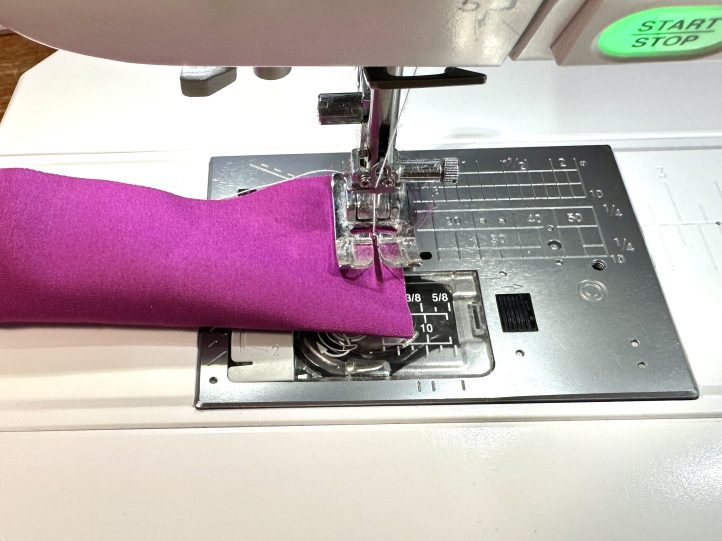
- Trim the point, being very careful not to cut the stitching, and turn the end the right way out. Press again.
- Repeat this for all of the wedges. To make the ‘plate’, pin two wedges of different colors right sides together and join along side.
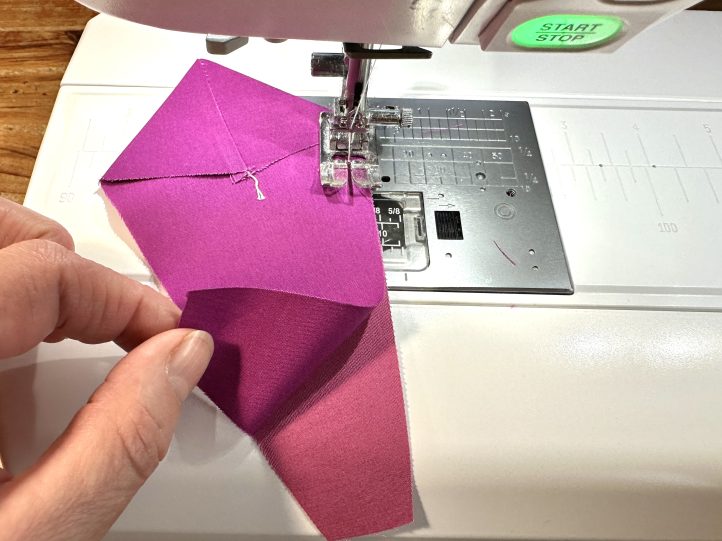
- TIP: Pay attention to the top of the wedge and ensure that it fits perfectly. The bottom (the thin end of the wedge) will not be seen as it is hidden by the center circle.
- Sew all of the wedges together to make a round plate and press the seams open.
- To make the circle for the center, you have a second template (Template III). Cut this out from thin cardboard.
- Using a hand sewing needle and thread, make a running stitch around the outside of your fabric center circle. Place the cardboard circle onto the wrong side of the fabric circle and draw in the thread to gather the fabric around the card circle.
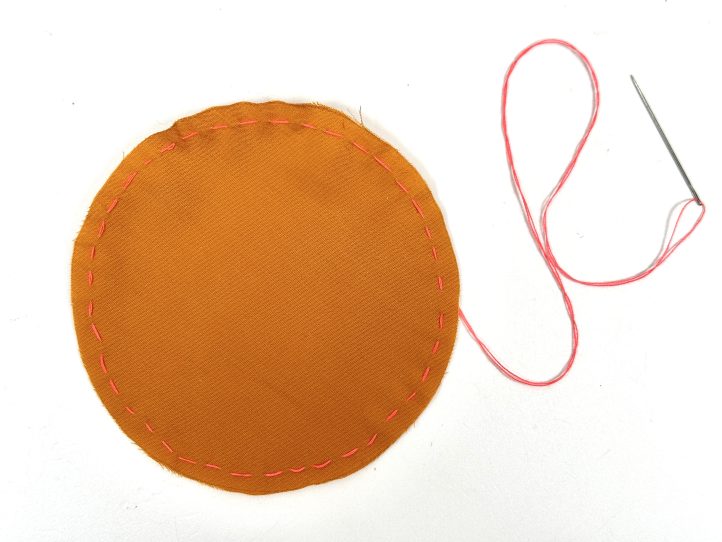
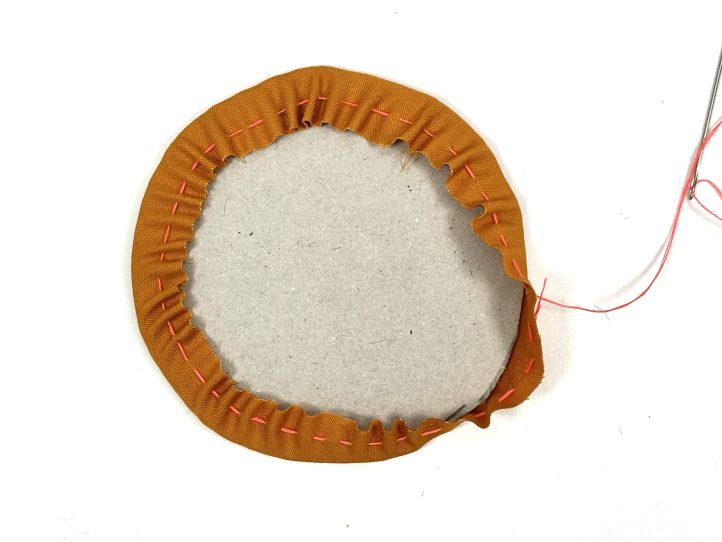
- Press from the right side and allow to cool with something heavy on the circle. When cool (the seam will be set), remove the gathering thread and take the card center out.
- Press the center square and fold it in half, then half again. Lightly press the folds. Open out and center the Dresden Plate perfectly using the pressed folds to help you. Pin really well.
- Appliqué the plate to the Dresden background into place.
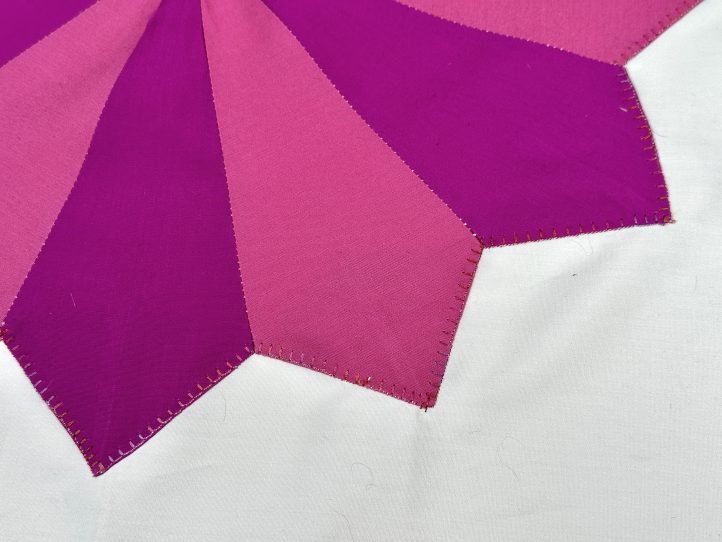
- TIP: You can do this by hand or machine as you prefer.
- Finally, appliqué the center disk which will hide the raw center.
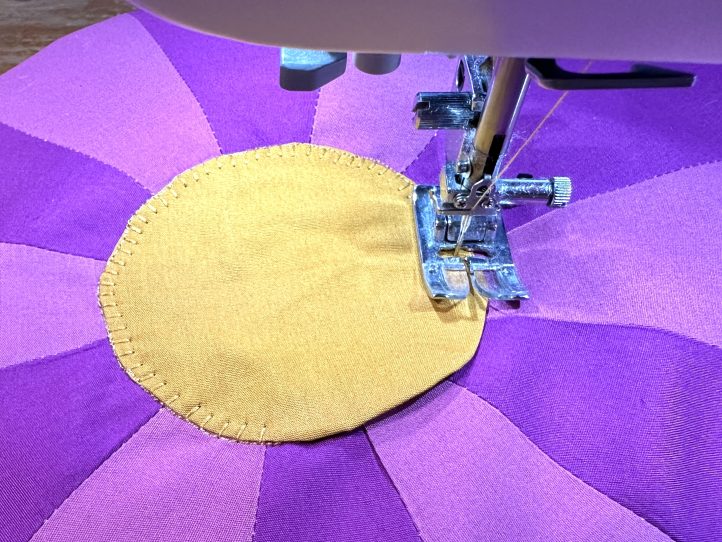
Make the Flying Geese Units:
TIP: These are made using the four at a time no-waste method of construction, which is easy to achieve, and the quilt design uses multiples of four for all of the Flying Geese units.
- For the Flying Geese units, you will have a large square and four smaller ones. Draw a diagonal line on the wrong side of all four of the smaller ones.
- Place two smaller squares onto the larger one so that the lines that you drew join together diagonally.
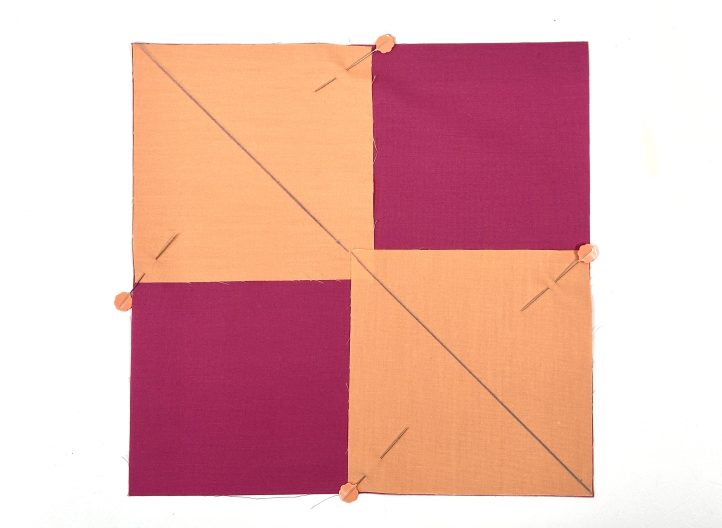
- Sew a 1/4” seam on each side of this line.
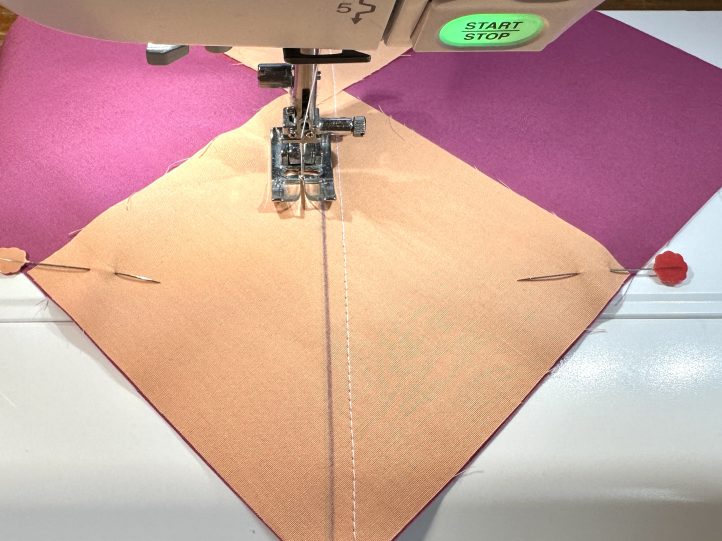
- Cut along the original drawn line and open the two pieces out so that they resemble hearts. Bring in another small square and place it so that the line runs like the photo below.
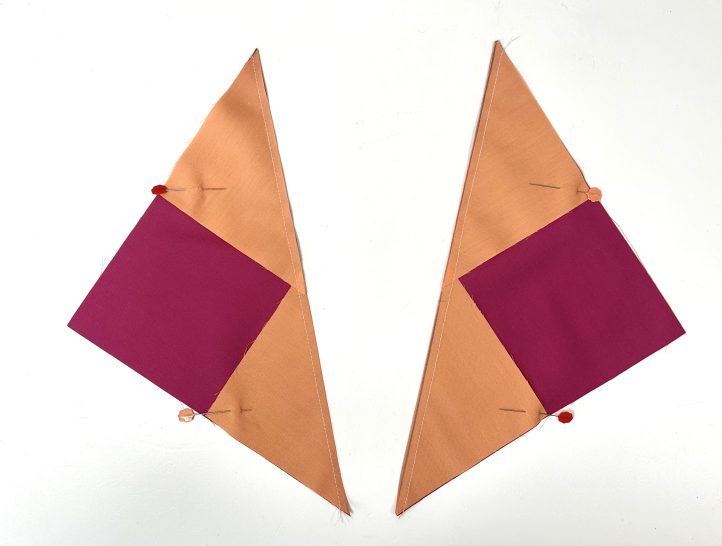
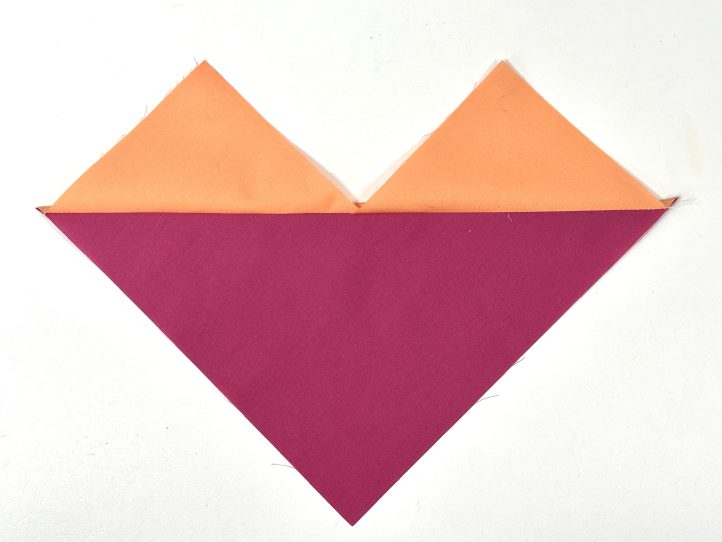
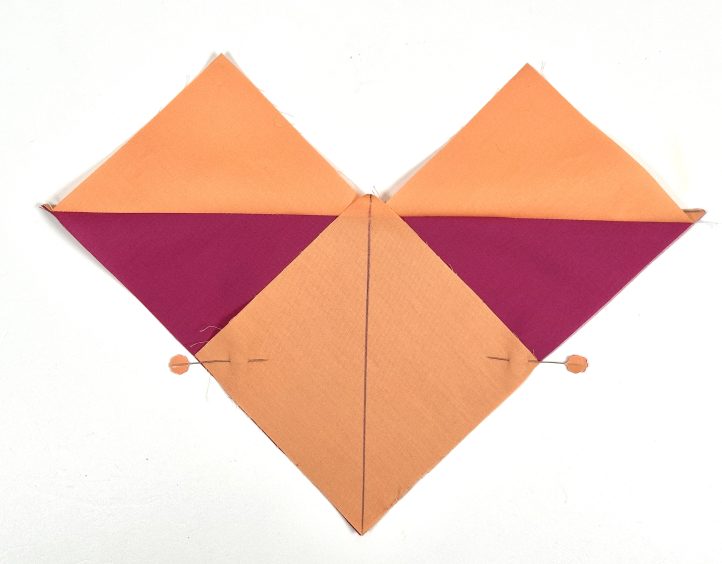
- Sew 1/4” on both sides of this line and then cut along the drawn line. Open the flying Geese Units out, press and trim to 8 1/2” wide x 4 1/2” tall.
- Repeat for the other pieces to make four units.
- Repeat this for all of the other Flying Geese units needed.
Assembly:
- The center medallion has four floral sashes at each side, top and bottom. The remaining corners have a sash to which a gold cornerstone has been joined. Add these components to finish the center and trim the center square to 33” sq.
- The next border features the Flying Geese units. Join two stacks of four together (lighter pink and apricot). Turn one stack of four to face the other so that all of the points face inward and join.
- Make four of these altogether. To make the cornerstones, turn the Flying Geese units to face each other and make a square.
- Attach two of the long stacks to the center medallion, top and bottom, and the remaining two will have a cornerstone added to each end before adding them to the left and right hand side of the center.
- Press the completed patchwork top ready for quilting.
MAKING:
Quilting:
- Lay the pressed backing fabric down and center the batting on top. Center the pressed quilt top onto the batting, ensuring overhang of both batting and backing fabric all around. Pin well so that no movement is possible in any direction.
- Quilt with your favorite pattern. Debbie loves a random wave, which is sewn diagonally and can be done on most home sewing machines.
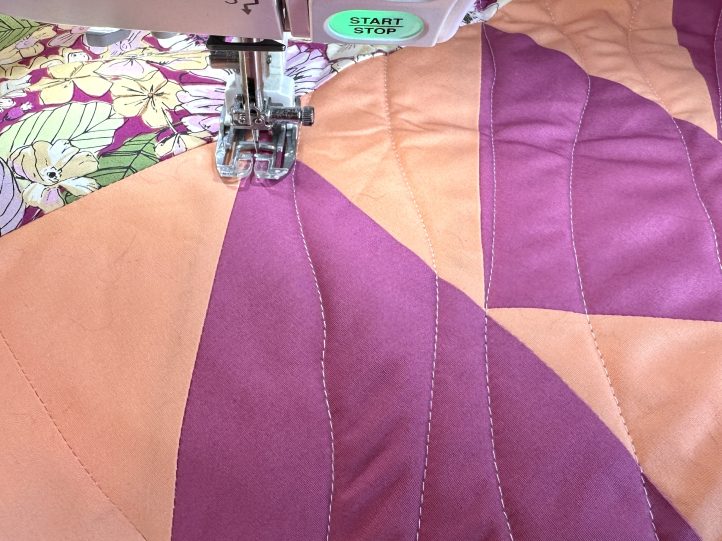
- When the quilting is finished, trim and square the quilt and round the corners.
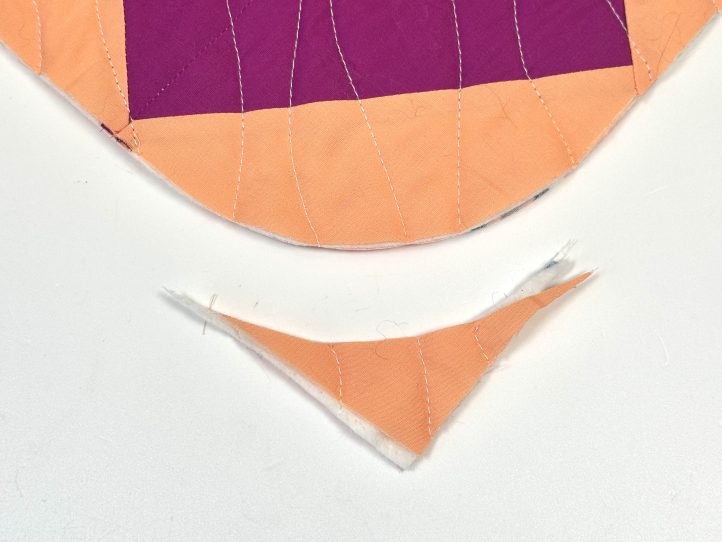
- TIP: To round the corners, find something round (an up-turned coffee cup or a small side plate, for example), draw around it and then cut the round corner out.
Binding:
- Bind the quilt with your bias tape.

